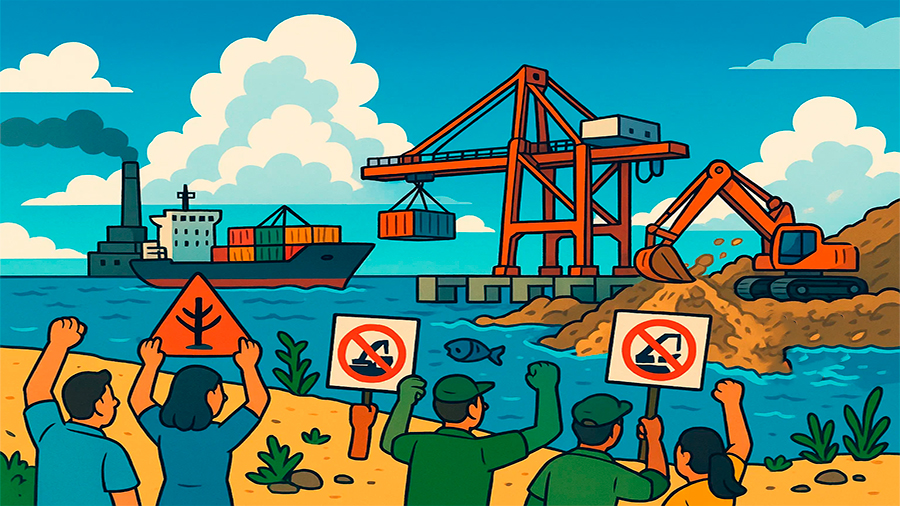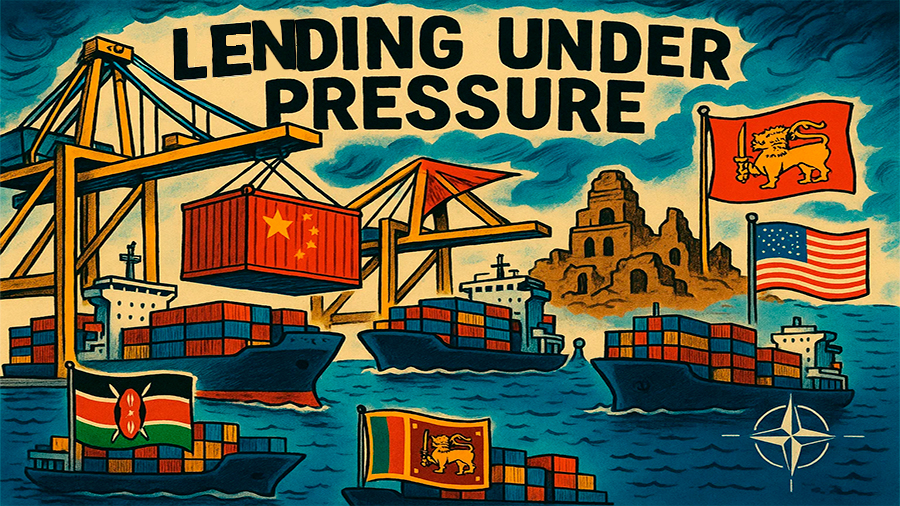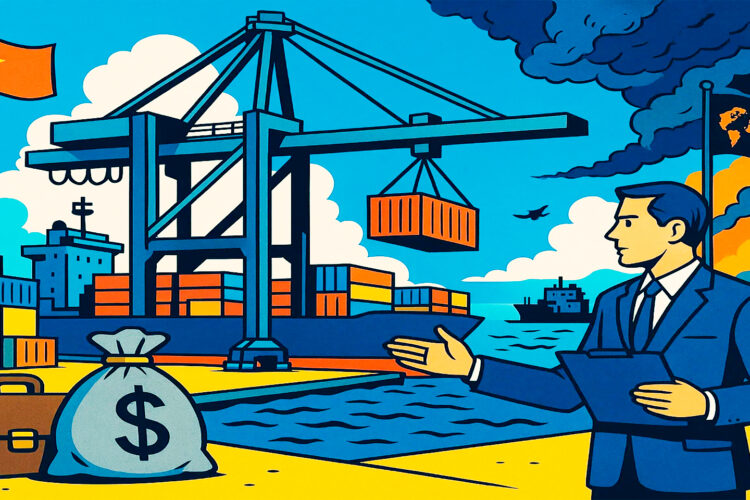Lending to Port Operators: Between Logistics and Geopolitics
Financing a port operator is never a neutral act. Ports stand at the frontlines of global commerce, where container flows meet political ambitions. For investors and banks, deciding whether to fund a port project requires looking beyond spreadsheets. It means evaluating repayment schedules, shipping contracts, and traffic forecasts, while also asking: who benefits from this expansion, and what influence comes attached? A loan can strengthen local economies, create jobs, and modernize infrastructure, but it can also tilt regional balances of power. Lending to a port is a bet placed not only on trade growth, but on which actors will control tomorrow’s maritime gateways.
The Economic Case for Lending to Ports
Ports generate steady revenues through docking fees, container handling, and storage services, making them appealing borrowers. Shipping traffic often grows with global trade, so income streams tend to be more predictable than in other industries. Expansion projects financed by loans can boost capacity, reduce congestion, and attract more carriers, ensuring higher long-term revenues. Well-positioned ports become regional economic anchors, supporting manufacturing exports, agricultural trade, and tourism flows. For banks, lending to ports can deliver reliable returns, especially when projects are tied to government development strategies or international trade corridors. The link between infrastructure and productivity makes these loans appear safe on paper, even in turbulent markets.
The Geopolitical Weight of Ports
Ports are rarely just neutral logistics hubs. They are strategic assets that influence regional power balances. Financing a port in East Africa, the Mediterranean, or the Indian Ocean often brings with it questions of military access, foreign bases, or naval supply rights. Chinese loans through the Belt and Road Initiative, for example, have reshaped ownership of key ports from Sri Lanka to Greece, giving Beijing stronger maritime leverage. U.S. and European financiers, meanwhile, back competing projects to secure trade lanes and reduce dependency on rivals. Lenders therefore must weigh not only repayment risk but also how their capital shifts the map of global influence.

Balancing Risk Between Logistics and Politics
Traditional credit assessments rarely capture the political volatility of ports. Even the busiest terminals can face sudden disruptions. Sanctions, embargoes, or maritime disputes can cut traffic overnight. Conflicts near the Black Sea or the Gulf have shown how quickly shipping patterns can collapse, leaving financiers exposed. Lenders frequently turn to political risk insurance, multilateral backing, or co-financing with development banks to mitigate threats. Yet these protections only soften the impact; they cannot erase the underlying fact that ports lie in contested waters. Risk here is not just about repayment; it is about the stability of the global trade arteries that the port connects.
Examples of Lending Under Pressure
The case of Piraeus in Greece highlights the dual logic of port financing. Backed by Chinese investment, it grew into one of Europe’s busiest hubs, but also sparked European debate about dependence on Chinese capital. In Sri Lanka, a debt-financed port eventually had to be leased on a 99-year basis when repayments failed, raising concerns over sovereignty. In Africa, loans for ports in Kenya and Djibouti triggered scrutiny over whether they could fall under foreign control if revenues disappointed. Meanwhile, U.S.-backed lending in the Baltic and Black Sea regions is seen as part of NATO’s logistical resilience. Each example shows that credit is never just a financial contract—it is a geopolitical choice.
Regional Lending Dynamics
Geography shapes risk in port financing. Ports in politically stable regions—such as Northern Europe or North America—tend to offer safer lending environments, with long-term contracts and steady trade flows. By contrast, ports in regions like the Middle East or South Asia offer higher growth potential but also heightened exposure to instability. In Latin America, financing decisions often balance between the need for modernization and the risk of government instability or regulatory shifts. For lenders, evaluating not only trade forecasts but also the political context of each region is critical. A port may promise high cargo volumes, but without political stability, repayment prospects weaken.
The Role of Banks and Investors in Strategic Trade
Private lenders are increasingly aware that port financing is about more than profit. Many institutions consult with national governments or multilateral banks before making commitments. Development banks like the EIB or World Bank often co-finance to ensure projects align with broader stability and sustainability goals. Private institutions face reputational risks if loans are linked to corruption, debt distress, or environmental damage. At the same time, refusing to finance projects in contested regions may leave them open to rival powers. Every loan decision is therefore a balancing act between immediate financial return and long-term strategic implications, forcing lenders into roles they may not have sought.

Hidden Social and Environmental Stakes
Loans to port operators also carry social and ecological consequences. Expansions often require land reclamation, dredging, and large-scale construction, which affect coastal communities and ecosystems. Poorly managed projects can disrupt fishing livelihoods or damage biodiversity, sparking public protests that create reputational risks for lenders. On the other hand, sustainable port design and transparent lending conditions can strengthen community support and reduce political backlash. Investors increasingly factor in environmental, social, and governance (ESG) considerations when assessing projects, knowing that ignoring these factors can make even financially strong loans unstable in the long run.
Looking at the Future of Port Lending
As global shipping evolves, the stakes for financing ports will only grow. Rising trade in renewable energy components, rare earths, and food supplies increases the importance of resilient and efficient terminals. Climate change will reshape sea lanes and make some ports less viable while elevating others. At the same time, competition among great powers will intensify around maritime corridors. For lenders, this means future port financing will demand not just financial skill, but geopolitical awareness and environmental foresight. Those able to integrate logistics, politics, and sustainability into lending strategies will remain relevant in a landscape where ports are both economic gateways and instruments of influence.
The Conclusion
Lending to port operators stands at the intersection of finance and geopolitics. Ports are engines of commerce, but also tools of power projection. For investors, a loan to a port promises solid returns, yet it also ties their capital to shifting alliances, contested waters, and global rivalries. Examples from Greece, Sri Lanka, and Africa show that what begins as infrastructure financing often ends as a test of sovereignty and influence. Banks, governments, and communities all play roles in shaping outcomes. In the end, financing a port means funding more than cranes and docks—it means underwriting the future balance of trade and power across the seas.

